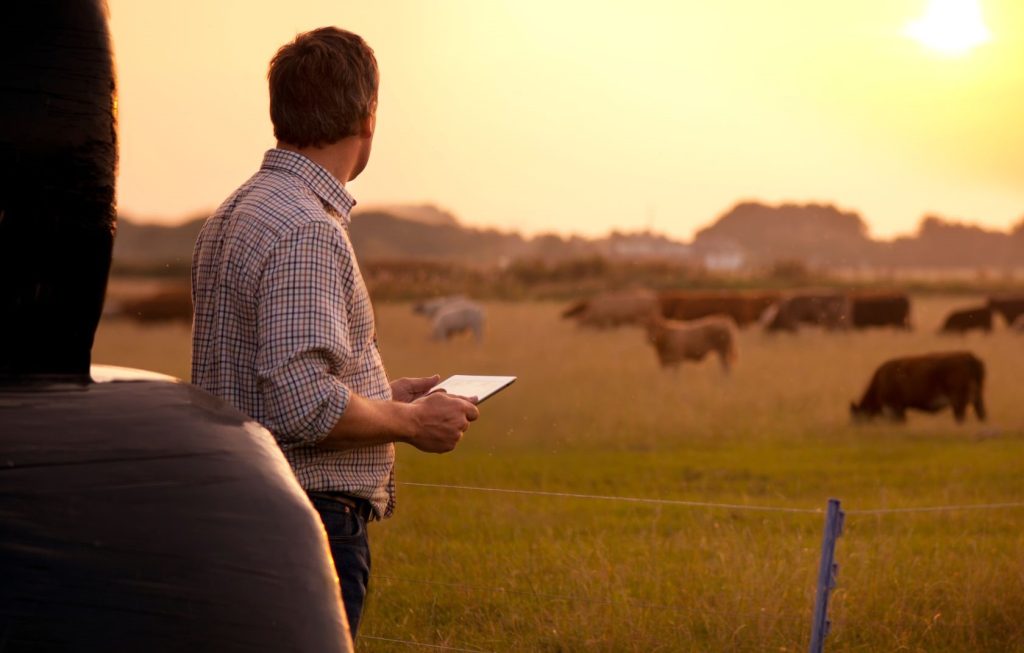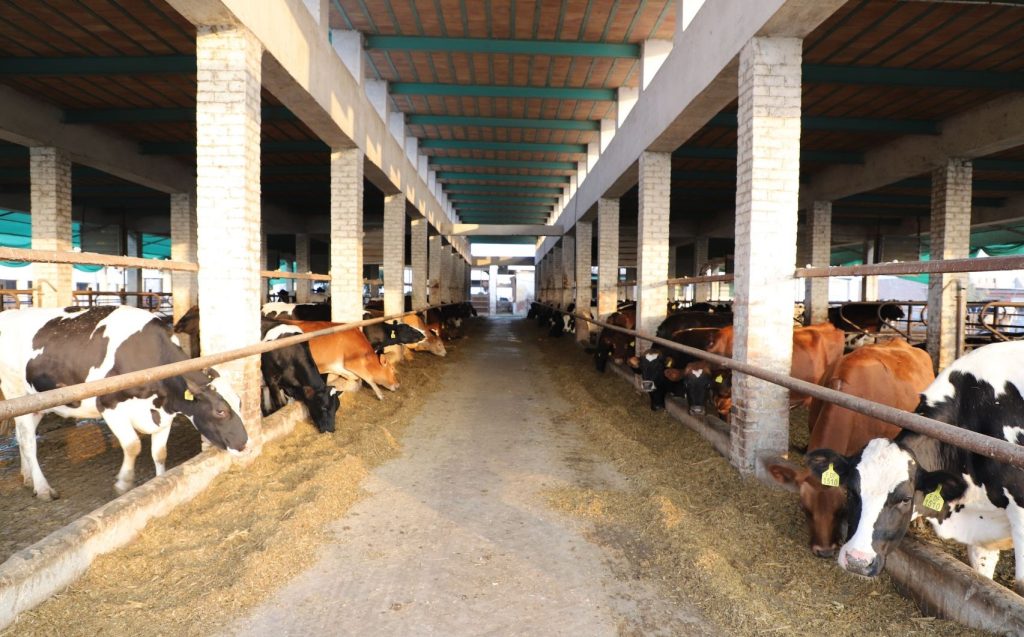AgTech Advancements in Beef and Dairy Cattle Production
Technology is developing rapidly everywhere, including in beef and dairy cattle production. In fact, among all the livestock species, someone could argue that beef and dairy has been the most proactive sector in innovating, researching, and adopting new ideas.
For example, artificial insemination and growth implants have been used since the 1950s, and genetic breeding values date to the 1970s. Dairy producers were also early pioneers in using genomics and sexed semen for herd improvement.
Technology has undeniably revolutionized the cattle sector’s management practices and enabled it to boost production using fewer resources over the past four decades. And still today, we continue to see that theme in new technologies and companies all geared towards serving the cattle industries.
The growth of cattle technologies – Technological advances for cattle farming
Today, technology is intertwined in every aspect of the beef and dairy communities. Farmers are using innovative technologies not just to improve efficiency and sustainability but also to better care for their animals.
Precision livestock technology, or the ability to precisely manage some aspect of livestock farming, is on the rise in cattle production because it can address production costs and labor challenges while increasing output. This is because beef and dairy farmers oversee large numbers of animals and face increasingly difficult labor shortages. Likewise, as prey animals, domestic cattle do not readily show external symptoms of disease or failure to thrive until the impact is quite severe.
But artificial intelligence and automated monitoring are fast-developing technologies that allow farmers and ranchers to manage their animals as herds and individuals – 24 hours and seven days a week. Visual data collected by means like cameras, tail monitors, pedometers, environmental monitors, and computers show information that is both actionable and objective.
Additionally, more specific sensors are being developed to monitor details like milk quality, cow health, and reproductive status in real time. Cattle-wearing sensors can even be moved remotely from one part of the farm to another with new software and apps.
Another undeniable change in cattle farming is the widespread use of robotics. Robots are now used to milk cows, feed animals, and mix rations, jobs that help farmers and ranchers overcome increasing challenges in finding labor. Today, robots are used on more than one in 10 farms. This trend is expected to grow by 20% over the next five years.
Though herd and individual animal monitoring are not new for cattle farmers, the amount and kind of data they can collect and use is changing. Technology allows them to “see” a cow without ever taking a look at her in person.
One of the herd management tasks that has benefited from technology is heat detection, a vital aspect of keeping dairy cows in production and improving efficiency, production, and profitability. The monitoring tools have become more precise over the years and now provide data for respiration, rumination and eating time, inactivity, and location.
Another task that can be easily monitored is body condition scores through feed delivery. Farmers and ranchers can gain insight regarding body reserves and other health statistics in real-time and head off potential mountains while they are still molehills.
Current applications of new technologies in the cattle industries
Many companies have developed technologies to help farmers and ranchers in the livestock sector to improve their operations. In recent years, many professionals and researchers-engineers have focused on efficiency and sustainability. Their solutions range from monitoring systems to invisible fences and beyond – all based on the ability to collect data.
One of these innovations introduced to the market is the use of a video analytics platform to glean insights into animal behavior. This information allows the farmer or farm manager to better care for the cow and makes sure no obstacles are standing in the way of her production and health. This information can be shared with veterinarians, nutritionists, and others on the care team.
Interestingly, there are important players in the market that strives to empower farmers of all sizes with information that helps them increase productivity while also reducing their carbon footprint. They operate with the belief that people, nature, and machines working together can address major issues facing our planet.
Finally, a new technology has been released that allows producers to sort animals based on specific criteria. This is a powerful tool because no two farms operate with the same agenda or look the same. The platform also stores information for the long haul so farmers can analyze trends or gauge progress.
The Future of cattle technology
Applications for technology in the cattle sector of agriculture abound. There are a few challenges livestock producers face today that cannot be resolved with technology and a desire to overcome. The biggest struggle is getting technology adopted.
Multiple computers or displays associated with a single program or technology are among these struggles. Opportunity definitely exists to better integrate all information in a way that can be displayed and used across devices. On smallholder farms or those in more remote regions, having access to the right software and getting internet connectivity for them pose a similar issue.
Data alone means nothing.
They are only useful when organized and applied meaningfully and used on a user-friendly platform that can be easily understood by various people who care for animals daily. Having the right software and tools to do this is essential for long-term success.
Before adopting new technology, cattle producers need to consider what issue it will resolve. Risk and reward need to be weighed along with return on investment. And finally, farmers need to consider how the technology has previously been used and ask if the needs aligned with theirs.
Tremendous opportunity for livestock farmers
Technology in all shapes and forms has already significantly impacted the livestock sector of agriculture. Its impact is sure to be even more far-reaching as more new technologies and innovations are introduced to the sector.
Among the strongest assets of these new technologies is their ability to gather data objectively around the clock and provide information farmers and ranchers can use to improve productivity, efficiency, profitability, and animal health and welfare. This is a win-win-win situation for animal welfare, sustainability, and the farmer’s quality of life through reduced labor.
Senor and data technologies can help detect sick animals and identify areas for improvement. Computer vision gives farmers a wealth of unbiased data that can be summarized in meaningful, actionable insights.
Ultimately, data-driven decisions lead to better, more efficient, and timely actions that advance not just the herd but the entire cattle industry.
Livestock AgTech to Improve Sustainability
AgTech innovations in Livestock Production
AgTech Advancements in Beef and Dairy Cattle Production









































































